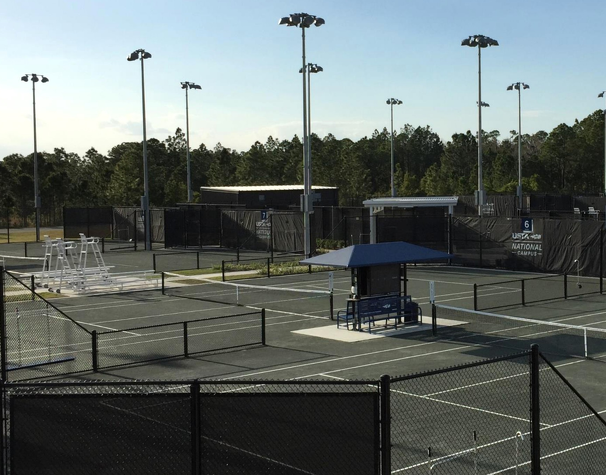Outdoor Led Tennis Court Lighting Standards & Recommendations

1. Outdoor Led Tennis Court Lighting Standards & requirements

Table 4. Summary of the lighting criteria for outdoor courts. The above average horizontal illuminances are maintained values.
2. Outdoor Led Tennis Court Lighting Installation Standards & recommendations
In order to get the appropriate horizontal illuminance on the ground (average level and uniformity) and also a sufficient illuminance level to reveal the ball in flight within the playing volume above the court, while ensuring that players do not suffer from disability glare, positioning and height of luminaires should be carefully considered as well as the choice of luminaire.
It is recommended to use sharp cutoff luminaires, with accurate light output control, mounted on columns; for a single court, mounting height between 8 and 12 mis generally appropriate to achieve the above conditions.
Columns are setup on either side of the TPA, using two to four column positions on both of the longitudinal sides, depending on the required quality of the Outdoor Led Tennis Court Lighting system (see Fig. 4).

Two or three adjacent courts can also belit without installing columns between the courts, for which the mounting height has to be increased ‘proportionally’. Where appropriate, adjoining courts can share the same columns to support the light fittings. Columns should be positioned so that participants are unlikely to collide with them.
As a rule, the mounting height has to be defined in relation to the lighting requirements and the column locations.
Note: As underground wiring is recommended for lighting columns, it maybe necessary to incorporate the containment for the wiring system during the construction of the tennis court, particularly if columns are required between courts located near the net posts.
3. Spill light
The potential impact on the environment of light spill from Outdoor Led Tennis Court Lighting installations should be considered during design of installations.
In countries where light nuisance is not a recognised statutory nuisance, recommended values for the control of obtrusive light for various environmental zones with respect to:
• Limitation of illumination on surrounding properties.
• Limitation of bright luminairesin the field of view (luminaire intensity).
• Limitation of sky glow (upward light).
• Limitation of the effects on road users (TI).
given in the European Standards for Sports Lighting, EN 12193:2008. can be applied.

Table 5. Limitation on properties, brightness and sky glow - Maximum obtrusive light (EN 12193).
Ev is the maximum value of vertical illuminance on properties.
I is the light intensity of each source in the potentially obtrusive direction.
ULR is the proportion of the flux of the luminaire(s) that is emitted above the horizontal when the luminaire(s) is (are) installed.
Note: Lower values may apply in relation with Light on properties and Luminaire intensity where curfews are implemented.

Table 6. Limitation of effect on road users - Maximum values of threshold increment (EN 12193) TI calculation as given in EN 13201-3.